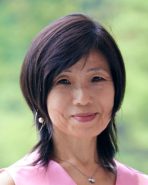Faculty
Curation Theory, Practice and Management Endowed Chair Adjunct ProfessorYuko HASEGAWA

- 【Specialized Fields】
- Modern and contemporary art history, Curation theory
- 【Subjects】
- Curatorial Theory and Practice
- 【Background】
- Graduated from Kyoto University, Bachelor of Arts in Law and Tokyo University of Fine Arts and Music, Master of Fine Arts in Art History. From 2006 to 2023, she served as professor at the Tama Art University (curatorial and art theory), Tokyo University of the Arts (Graduate School of Global Arts, Department of the Arts Studies and Curatorial Practices), and visiting professor at Ca’Foscari University of Venice.
Since 1990, she has served as a curator at Art Tower Mito, visiting curator at the Whitney Museum, curator at the Setagaya Art Museum, chief curator and artistic director at the 21st Century Museum of Contemporary Art, Kanazawa, chief curator and Artistic Director at the Museum of Contemporary Art Tokyo, and director at the 21st Century Museum of Contemporary Art, Kanazawa, before assuming his current position.
She currently holds positions as Visiting Professor of Research Institute for Humanity and Nature (RIHN), Artistic Director of Inujima House Art Project, Director of Art and Design of the International House of Japan, and Professor Emeritus of Tokyo University of the Arts.
- 【Publications】
- ・“Reaching Furtively Towards the Future: A Biennial for a Time of Transition,” PASS, International Biennial Association (IBA), 2021
・“A New Ecology and Art : on the Clouds ⇄Forests exhibition”, Tokyo University of the Arts GA Journal, 2020
・"Performativity in the Work of Female Japanese Artists In the 1950s-1960s and the 1990s," Modern Women: Women Artists at the Museum of Modern Art, MOMA, 2010
・Curation ―The way to shuffle sensibility and intelligence, 2013
・Destroy, They Say: Women Artists Subtly Traversing Boundaries, 2017
・Japanorama : new vision on art since 1970,, 2021
・Art and New Ecology : Anthropocene as dithering time, ,2022
- 【Message】
- Curation is the act of connecting A and B through art, objects, exhibitions, or projects to create relational value C.
In the modern era of information overload, visually "translating" and "connecting" information has become increasingly important. For example, when an artist aesthetically visualizes a scientist's research, it can deepen the understanding of high-content information. Furthermore, this curation theory, which can be broadly applied to experience design, spatial design, and more, is constructed and practiced through exhibitions and projects.
- 【Website】
- http://yukohasegawa.jp/


